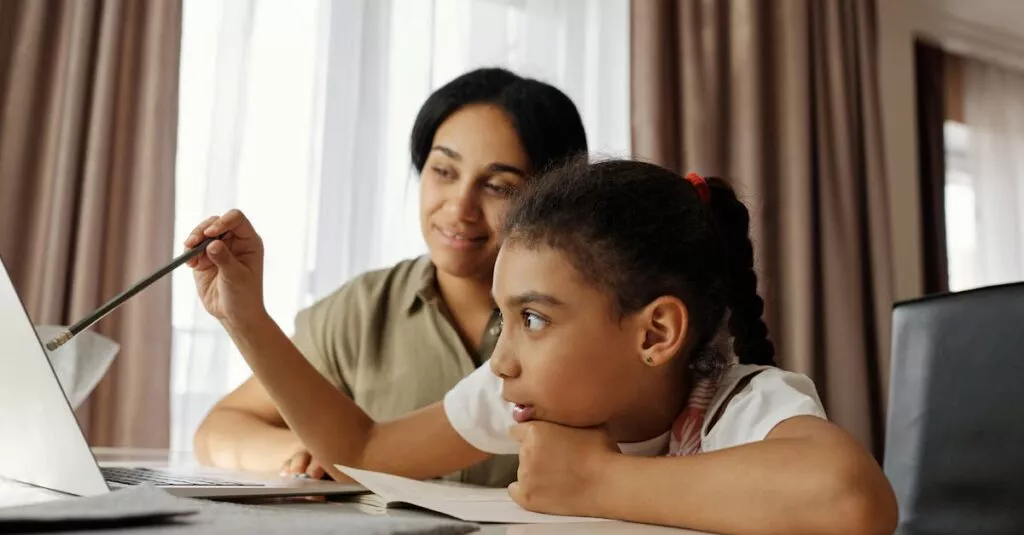The New ABCs: AI, Basics, and Children
Remember when learning meant ABC books and chalkboards? Fast forward to today, and our kids are navigating through AI-powered apps before they can even spell ‘AI’. It’s awe-inspiring yet slightly terrifying, right? AI tools are everywhere, becoming intimate with our daily lives, especially in education. They offer personalized learning paths but also raise questions about traditional learning methods’ relevance. What’s clear is that AI in education sows seeds for a future where learning is more adaptive, inclusive, and engaging. But as parents, how do we ensure that this technology becomes a tool rather than a crutch for our children?

Balancing Screen Time with Green Time
Let’s talk about screen time. We’ve all been there: the easy way out is giving a tablet to avoid a tantrum. But as we navigate our children’s learning landscapes, balancing AI tool usage with time outdoors becomes crucial. Studies suggest that nature and physical play enhance cognitive abilities and emotional well-being.
So, yes, let your child explore AI educational tools, but also make sure they’re getting enough ‘green time‘. It’s about striking that balance to support their overall development.

Artificial Intelligence or Imaginative Play?
The debate between using AI-powered educational tools and encouraging imaginative play isn’t new. Both have unique benefits. AI can customize learning, making complex concepts more accessible. Imaginative play, on the other hand, builds creative thinking and social skills. Why choose one when you can have the best of both? Encourage your child to use AI learning apps and carve out time for play that sparks creativity. It’s the blend of technology and traditional play that will prepare them for a future we can hardly predict.

Parents in the Digital Age: Guides, Not Gatekeepers
Here’s a thought: What if, instead of trying to control our kids’ digital exposure, we join them? Guiding them through the digital landscape can be more effective than simply setting limits. Show interest in the AI tools they’re using. Engage with them. Learn together. This approach not only helps us understand the impact of these tools on their learning but also strengthens our relationship with our children. It’s about being guides in this digital age, helping them navigate the vast sea of information responsibly.

Building a Healthy Relationship with Technology
Developing a healthy relationship with technology begins with us, the parents. It’s about setting examples by limiting our own screen time and showing the value of offline experiences.
Encourage discussions about the AI tools your child uses. Ask what they like and what they learn. Make technology a part of family time, explore new apps together, and discuss the content. This not only aids in selecting age-appropriate tools but also instills critical thinking about digital content.
Remember, it’s not about fear but about understanding and respect for technology.

